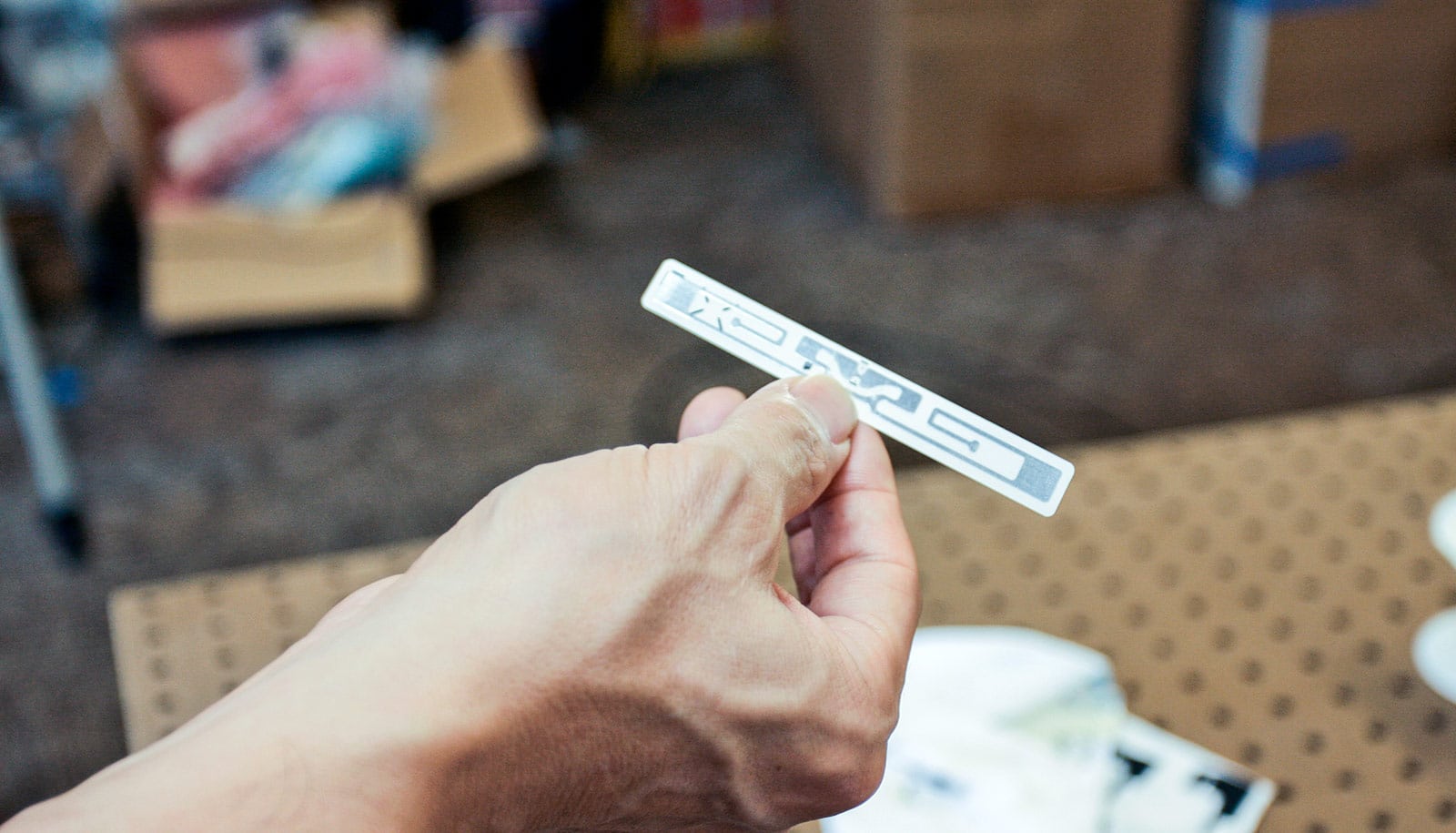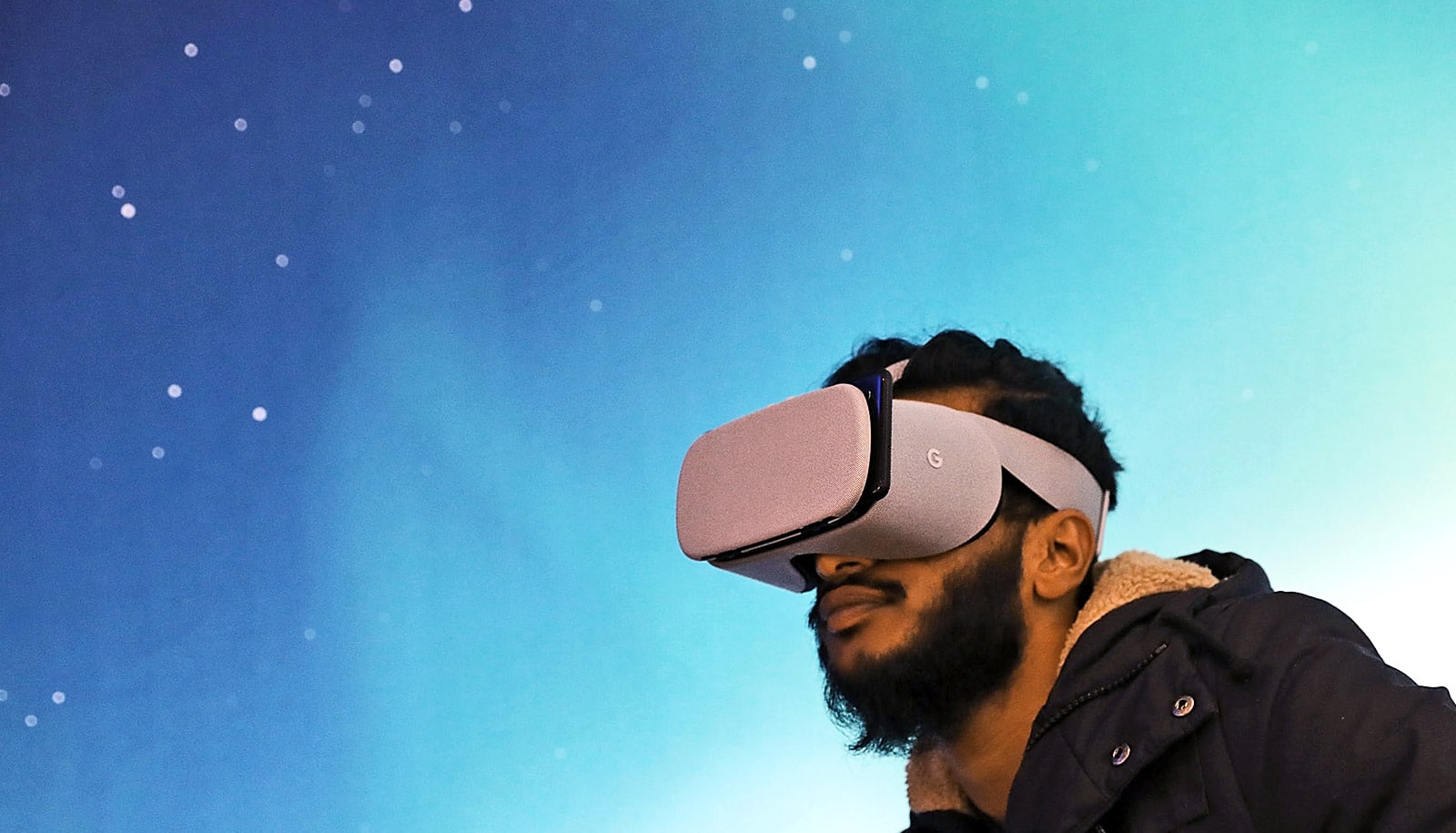RFID-embedded clothing could control avatars in video games or tell you when you should sit up straight.
Researchers have found ways to track body movements and detect shape changes using arrays of radio-frequency identification (RFID) tags in clothing.
RFID tags are nothing new, which is part of their appeal for these applications, says Haojian Jin, a PhD student in Carnegie Mellon University’s Human-Computer Interaction Institute (HCII). They are cheap, battery-free, and washable.
RF-wear for fun and exercise
What’s new is the method that Jin and his colleagues devised for tracking the tags, and monitoring movements and shapes. RFID tags reflect certain radio frequencies. It would be possible, but not practical, to use multiple antennae to track this backscatter and triangulate the locations of the tags. Rather, the researchers showed they could use a single, mobile antenna to monitor an array of tags without any prior calibration.
Just how this works varies based on whether the tags are used to track the body’s skeletal positions or to track changes in shape. For body-movement tracking, arrays of RFID tags are positioned on either side of the knee, elbow, or other joints. By keeping track of the ever-so-slight differences in when the backscattered radio signals from each tag reach the antenna, it’s possible to calculate the angle of bend in a joint.
“By attaching these paper-like RFID tags to clothing, we were able to demonstrate millimeter accuracy in skeletal tracking,” Jin says.
The researchers call this embedded clothing, which they described earlier this year at the UbiComp 2018 conference in Singapore, RF-Wear. It could be an alternative to systems such as Kinect, which use a camera to track body movements and can only work when the person is in the camera’s line of sight. It also could be an alternative to existing wearables, which generally depend on inertial sensors that are expensive, difficult to maintain, and power hungry, Jin says.
RFID-embedded clothes might also be an alternative to wrist-worn devices, such as Fitbit, for activity tracking or sports training.
Wishing for better posture
The technology for monitoring changes in curves or shapes, called WiSh (for Wireless Shape-aware world), also uses arrays of RFIDs and a single antenna, but relies on a more sophisticated algorithm for interpreting the backscattered signals to infer the shape of a surface.
The researchers presented WiSh earlier this year at Mobisys, the International Conference on Mobile Systems, Applications, and Services, in Munich. It could be incorporated into smart fabrics and used to track a user’s posture. It could also embed in a variety of objects.
“We can turn any soft surface in the environment into a touch screen,” Wang says. Smart carpets, for instance, could detect the presence and locations of people, or control games or devices. Soft toys could respond to or otherwise register squeezes and bends. Smart pillows might help track sleep quality.
WiSh also could monitor the structural health of bridges or other infrastructure, Wang notes. The researchers measured the curvature of Pittsburgh’s 10th Street Bridge by using a robot to drag a string of 50 RFID tags along the bridge’s sidewalk.
“We’re really changing the way people are thinking about RF sensing,” Jin adds.
“Weaving these tags into clothing will only add a minimal cost, under $1,” Jin says. The most expensive part of these measurement systems is the antenna. But smartphones already use 13 MHz antennas for services such as Apple Pay. Adding a 900 MHz antenna for RFID-related applications might be feasible in future smartphones, eliminating the need for a separate device, he suggests.
Additional researchers came from Carnegie Mellon and Tsinghua University in China. The National Science Foundation and Google provided support for this research.
Source: Carnegie Mellon University



